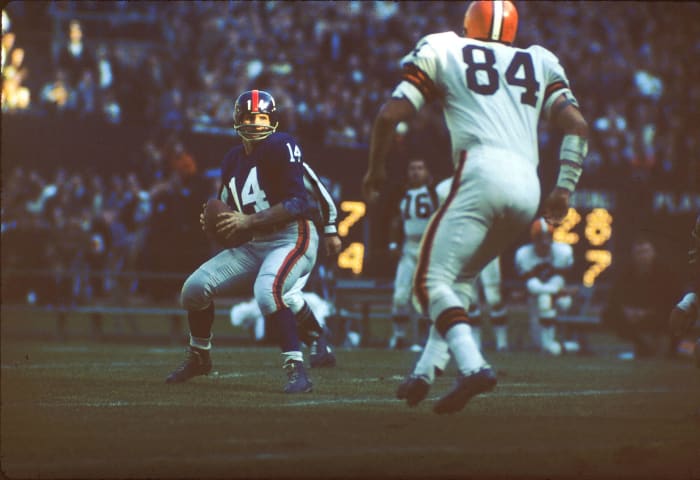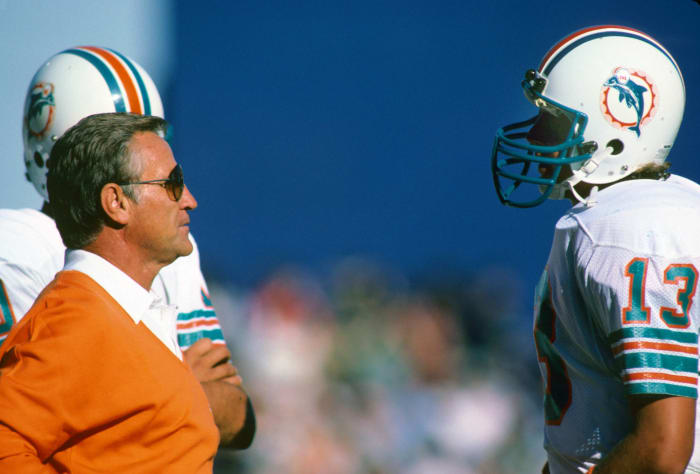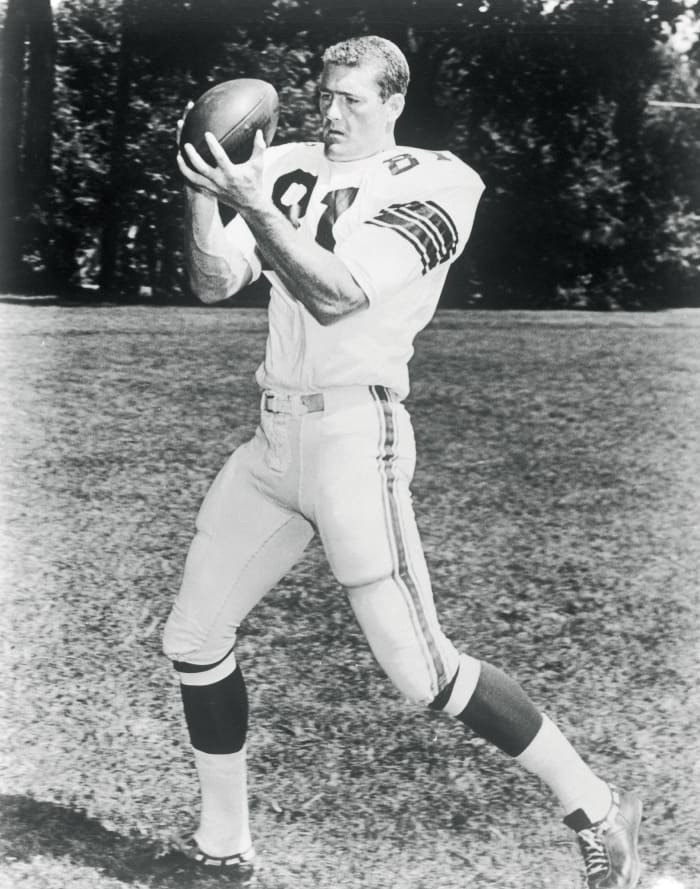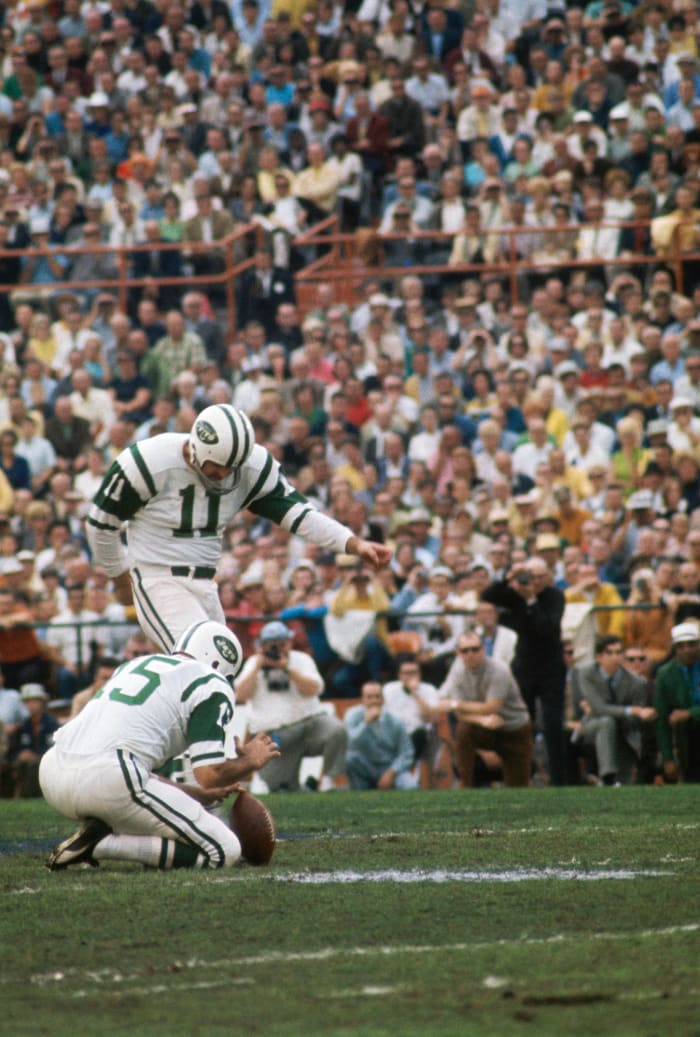- Home
- Quizzes
- My Quiz Activity
- Newsletters
- Sports Betting
- MY FAVORITES
- Add Sports/Teams
- SPORTS
-
NFL
- NFL Home
- Arizona Cardinals
- Atlanta Falcons
- Baltimore Ravens
- Buffalo Bills
- Carolina Panthers
- Chicago Bears
- Cincinnati Bengals
- Cleveland Browns
- Dallas Cowboys
- Denver Broncos
- Detroit Lions
- Green Bay Packers
- Houston Texans
- Indianapolis Colts
- Jacksonville Jaguars
- Kansas City Chiefs
- Las Vegas Raiders
- Los Angeles Chargers
- Los Angeles Rams
- Miami Dolphins
- Minnesota Vikings
- New England Patriots
- New Orleans Saints
- New York Jets
- New York Giants
- Philadelphia Eagles
- Pittsburgh Steelers
- San Francisco 49ers
- Seattle Seahawks
- Tampa Bay Buccaneers
- Tennessee Titans
- Washington Commanders
-
MLB
- MLB Home
- Arizona Diamondbacks
- Atlanta Braves
- Baltimore Orioles
- Boston Red Sox
- Chicago White Sox
- Chicago Cubs
- Cincinnati Reds
- Cleveland Guardians
- Colorado Rockies
- Detroit Tigers
- Houston Astros
- Kansas City Royals
- Los Angeles Angels
- Los Angeles Dodgers
- Miami Marlins
- Milwaukee Brewers
- Minnesota Twins
- New York Yankees
- New York Mets
- Oakland Athletics
- Philadelphia Phillies
- Pittsburgh Pirates
- San Diego Padres
- San Francisco Giants
- Seattle Mariners
- St. Louis Cardinals
- Tampa Bay Rays
- Texas Rangers
- Toronto Blue Jays
- Washington Nationals
-
NBA
- NBA Home
- Atlanta Hawks
- Boston Celtics
- Brooklyn Nets
- Charlotte Hornets
- Chicago Bulls
- Cleveland Cavaliers
- Dallas Mavericks
- Denver Nuggets
- Detroit Pistons
- Golden State Warriors
- Houston Rockets
- Indiana Pacers
- Los Angeles Clippers
- Los Angeles Lakers
- Memphis Grizzlies
- Miami Heat
- Milwaukee Bucks
- Minnesota Timberwolves
- New Orleans Pelicans
- New York Knicks
- Oklahoma City Thunder
- Orlando Magic
- Philadelphia 76ers
- Phoenix Suns
- Portland Trail Blazers
- Sacramento Kings
- San Antonio Spurs
- Toronto Raptors
- Utah Jazz
- Washington Wizards
-
NHL
- NHL Home
- Anaheim Ducks
- Arizona Coyotes
- Boston Bruins
- Buffalo Sabres
- Calgary Flames
- Carolina Hurricanes
- Chicago Blackhawks
- Colorado Avalanche
- Columbus Blue Jackets
- Dallas Stars
- Detroit Red Wings
- Edmonton Oilers
- Florida Panthers
- Los Angeles Kings
- Minnesota Wild
- Montreal Canadiens
- Nashville Predators
- New Jersey Devils
- New York Islanders
- New York Rangers
- Ottawa Senators
- Philadelphia Flyers
- Pittsburgh Penguins
- San Jose Sharks
- Seattle Kraken
- St. Louis Blues
- Tampa Bay Lightning
- Toronto Maple Leafs
- Vancouver Canucks
- Vegas Golden Knights
- Washington Capitals
- Winnipeg Jets
- NCAAF
- NCAAM
- Boxing
- Entertainment
- Lifestyle
- Golf
- MMA
- Soccer
- Tennis
- Wrestling
- More Sports
- RESOURCES
- My Account
- YB on Facebook
- YB on Twitter
- YB on Flipboard
- Contact Us
- Privacy Policy
- Terms of Service

How did the NFL record book change when the schedule last expanded?
After 42 seasons, the NFL is ending the 16-game era. The 2021 season will debut a 17-game schedule, and some league records will be under siege. This was the case when the league expanded from 14 to 16 games in 1978. Here are the players who held the major single-season records at the end of the 14-game era and the ones who first broke them after the regular-season expansion.
Passing yards: Joe Namath, 1967

The season before the Jets' football-changing upset featured an overlooked aerial onslaught. Namath produced the only 4,000-yard season in AFL history -- 4,007 yards -- and by the time the 14-game era ended after the 1977 season, no one else had surpassed the barrier. In fact, Namath's then-astonishing total was nearly 300 more than anyone had compiled in a season through the first 58 years of major American professional football. Two Namath targets -- Hall of Famer Don Maynard and standout sidekick George Sauer -- surpassed 1,100 receiving yards in an 8-5-1 Jets season.
Broken by: Dan Fouts, 1979

Namath's mark could not survive the 16-game season for long, with Fouts -- gifted with a historically explosive system upon Don Coryell's 1978 San Diego return -- expanding the 4,000-yard club to two in Year 2 of the 16-game era. The then-28-year-old QB reached 4,082 yards, forming "Air Coryell" with young talents Kellen Winslow and John Jefferson and veteran Charlie Joiner. Fouts also led the league in passing in 1980, '81, and '82, riding this mid-career zenith to the Hall of Fame. In 1981, Fouts eclipsed 4,800 yards. Dan Marino broke through the 5,000-yard barrier three years later.
Current record: 5,477 (Peyton Manning, 2013)
Touchdown passes: George Blanda, 1961; Y.A. Tittle, 1963

In addition to Namath's 1967 season lasting through the end of the 14-game era, his AFL counterpart's dominant 1961 slate survived that period as well. In his second year of unretirement, Blanda fired 36 touchdown passes -- teaming with AFL All-Stars Charley Hennigan and Bill Groman -- and led the Oilers to their second straight title. Two years later, Tittle's 36-TD effort was more surprising. At 37, in the more run-oriented NFL, Tittle threw eight more touchdowns than any other NFL QB. Five Giants -- led by All-Decade wideout Del Shofner -- caught at least five TDs in Allie Sherman's offense en route to the NFL title game.
Broken by: Dan Marino, 1984

Marino tied the Blanda-Tittle record in Week 13. In a goalpost-moving season for the passing game, the second-year quarterback narrowly eclipsed Fouts' passing yardage record but obliterated the 1960s touchdown mark. Marino did not need 16 games to break this record; he threw four touchdown passes in each of Miami's final four regular-season games to finish with 48. This unfathomable showing powered the Dolphins to Super Bowl XIX. Despite Eric Dickerson setting a still-standing rushing record that year, Marino ran away with MVP honors -- his only career MVP award.
Current record: 55 (Peyton Manning, 2013)
Pass completions: Sonny Jurgensen, 1967

Although Washington went just 5-6-3 in 1967, the team had an elite aerial arsenal. Three Hall of Famers -- Jurgensen and receivers Bobby Mitchell and Charley Taylor -- led this offense, and record-setting tight end Jerry Smith enjoyed his best season as well. Blessed with this bevy of targets, Jurgensen completed 288 passes. Taylor led the league with 70 catches, with Smith (67) and Mitchell (60) not far behind. These three were on the receiving end for all but three of Jurgensen's league-leading 31 touchdown passes as well.
Broken by: Fran Tarkenton, 1978

The 1970s were not a time for much aerial exploration, with running backs and defense ruling the decade. But, interestingly, Tarkenton broke Jurgensen's completion mark in the Vikings' 14th game in 1978. The Hall of Famer completed 345 passes in the first year of the 16-game era, which doubled as the 38-year-old QB's final season. A season-high 30-completion game against the Eagles in Week 14 gave Tarkenton yet another record. He retired holding many of them. Offensive coordinator Jerry Burns' attack helped Tarkenton here. Running backs Rickey Young and Chuck Foreman combined for 149 receptions.
Current record: 471 (Drew Brees, 2016)
Rushing yards: O.J. Simpson, 1973

Going into the 1973 season, only one player had ever rushed for more than 1,500 yards. Yes, it was Jim Brown, who did it three times. In the heart of a run-heavy NFL stretch, Simpson accomplished one of the NFL's greatest feats by not only becoming the first man to reach 1,900 yards in a season but getting to 2,000 in 14 games. The Bills' superstar back finished with 2,003 rushing yards, averaging 6.0 per carry in a season themed around Juice's record pursuit. He managed just six catches, and starting QB Joe Ferguson threw just four touchdown passes despite starting all 14 games.
Broken by: Eric Dickerson, 1984

Dickerson did not need the full 16-game season to break Simpson's record, moving past it in Week 15 with a 215-yard performance against a lowly Oilers squad. Even though the SMU product did not lead the NFL in carries that year -- the Bucs' James Wilder did, with a staggering 407 -- but he carried the Rams to the playoffs. Los Angeles used first-time starter and future career backup, Jeff Kemp, at quarterback. Dickerson's 2,105 rushing yards were more than Kemp's passing total (2,021), but the Rams went 10-6 and booked a wild-card slot. Dickerson's record survived the NFL's 16-game era. Will Derrick Henry have enough to take it down in 17?
Rushing touchdowns: Jim Taylor, 1962

This team is not referenced as much as the Packers' Super Bowl-winning squads, but it was easily the best of Vince Lombardi's career and one of the greatest in NFL history. Taylor was that squad's engine, and he motored to 19 rushing touchdowns to lead the Pack to a 13-1 record. Green Bay's fullback ran behind a three-Hall of Famer O-line -- Forrest Gregg, Jim Ringo, Jerry Kramer -- and teamed with fellow Canton inductees Bart Starr and Paul Hornung. In addition to the touchdown record, Taylor totaled 1,474 rushing yards, giving Jim Brown the only second-place rushing finish of his career.
Broken by: John Riggins, 1983

Both Earl Campbell and Chuck Muncie tied Taylor's record in the 16-game schedule's early years, but Riggins smashed it to help Washington set a major standard in the process. Riggins rambled for 24 rushing touchdowns for a 14-2 Washington squad, doing so at age 34. "The Diesel" broke Taylor's record in Week 13 and only played in 15 games that season. By the time Riggo's avalanche concluded, Washington held the NFL's single-season scoring record (541 points). Although the Raiders mauled Washington in Super Bowl XVIII, the team's scoring record stood for 15 years.
Current record: 28 (LaDainian Tomlinson, 2006)
Carries: Walter Payton, 1977

One of the most durable players in American sports history, Payton totaled 3,838 carries in 13 seasons. He missed one career game. On his way to the NFL MVP award in his third season, the Bears legend logged 339 carries. These Bears ranked 22nd defensively and 21st in passing. They needed Payton, and he delivered, producing a career-high 1,852 rushing yards to lift Chicago to its first playoff berth since winning the 1963 NFL championship. Payton hit 30-plus carries three times in the Bears' final five games -- all wins -- and compiled 40 totes in his 275-yard game against the Vikings that broke the single-game rushing record.
Broken by: Walter Payton, 1979

Payton's 1977 season comes up often, but another Payton-dependent Bears team fed its ball-carrying machine to make it back to the playoffs two years later. The two extra games ended with a 25-year-old Payton breaking his own record, finishing with 369 carries. Payton led the NFL in carries in each season from 1976-79. He topped out at 39 handoffs in a 10-7 win over the Bills that year. However, "Sweetness" came through with a 33-tote, 157-yard day in Week 16 in a game in which the Bears needed points to win a scoring tiebreaker to clinch their postseason slot. They beat the Cardinals 42-6 that day.
Current record: 416 (Larry Johnson, 2006)
Receptions: Charley Hennigan, 1964

Multiple Hennigan seasons appear on this list. This one did not result in the Oilers winning a championship, but their top receiver's 101 receptions would be the AFL-NFL standard for more than 20 years. Interestingly, Hennigan only broke the AFL record by one, edging Broncos wideout Lionel Taylor's mark from 1961. But by 1983, no other player joined the 100-catch club. Hennigan is not a Hall of Famer, but George Blanda's speedy target produced two of the greatest seasons in the history of the wide receiver position.
Broken by: Art Monk, 1984

One of the game's greatest possession receivers was the first to join the AFLers in the 100-reception club, compiling 106 in his lone first-team All-Pro season. A 1980 first-round pick, Monk teamed with diminutive Washington wideouts Charlie Brown and Alvin Garrett during the team's back-to-back Super Bowl seasons. Injuries removed both "Fun Bunch" Monk mates from the 1984 squad's equation, putting more on the future Hall of Famer's shoulders. Despite Monk battling injuries in 1982 and '83, He delivered in '84, helping Washington -- in Joe Theismann's final full season -- to the NFC East title.
Current record: 149 (Michael Thomas, 2019)
Receiving yards: Charley Hennigan, 1961

To contextualize Hennigan's second-season dominance, it took 34 years for this record to fall. And only five players -- all Hall of Famers or future Canton bust recipients -- have recorded more receiving yards in a season, and they did so in a friendlier passing era. The 6-foot-1 Oilers flanker posted 1,746 yards in 1961, leading a stacked Houston offense to a championship and helping George Blanda earn AFL MVP acclaim. Hennigan started his season with five 100-yard games, including a 272-yard rampage in a tie with the Patriots, and topped 200 twice in the second half. He led the AFL by 570 yards.
Broken by: Jerry Rice, 1995

Two players broke Hennigan's record in 1995, a big year for NFL passing attacks. Both resided in the NFC West, and Rice entered Week 16 trailing Isaac Bruce. But the San Francisco receiver cyborg dropped a 289-yard masterpiece on a Monday night against the Vikings and ended up with 1,848 yards. Bruce, only in his second season and working with Chris Miller (as opposed to Steve Young), put up 210 yards in Week 17 and ended with 1,781 yards. Rice did this at age 33 and with Young out for five games, though this probably does not rank among his top 10 statistical achievements.
Current record: 1,964 (Calvin Johnson, 2012)
Receiving TDs: Don Hutson, 1942; Elroy Hirsch, 1951; Bill Groman, 1961

Two players on historically productive pass offenses and one of sports' great outliers shared this record for a while. Dominating a World War II-depleted NFL in 1942, Hutson smashed the previous record by seven and finished with 17 touchdown grabs in just 11 games. The Packer legend retired with a cool 63 more TD catches than his closest peer. Hirsch matched Hutson with 17 TD receptions for a Rams offense that averaged 32.7 points per game -- which was actually down from 1950 -- on their way to a championship. Groman teamed with Hennigan to lift the Oilers to the 1961 AFL crown but never again topped three TD catches in a season.
Broken by: Mark Clayton, 1984

While Miami's "Marks Brothers" receiving tandem is remembered as a pair, the team had higher hopes for Mark Duper -- a 1982 second-round pick -- than Clayton (Round 8, 1983) initially. But the 5-foot-9 NFL sophomore showed he would become a longtime Dan Marino target in 1984 when he caught 18 touchdown passes in Marino's record-smashing season. Clayton only needed 15 games to break the 23-year-old receiving TD mark, but he entered the Dolphins' Monday-night finale two short. Marino and Clayton hooked up three times in a win over the Cowboys, with the record-setter coming on a 63-yard game-winner, cementing a 14-2 Dolphins season.
Current record: 23 (Randy Moss, 2007)
Receiving yards by a tight end: Jackie Smith, 1967

A true specimen at the tight end position as a young player, Smith was in his fifth season when he notched his only 1,000-yard year. The Hall of Famer made it count, totaling 1,205 yards and doing so on only 56 catches. That is a cool 21.5 per grab. (For reference, Travis Kelce has topped out at 13.5 per reception.) The Cardinals went just 6-7-3 in 1967, but Smith did what he could for the struggling franchise. The five-time Pro Bowler caught a career-high nine touchdowns that year. Though known unfairly for a Super Bowl XIII drop, Smith retired with 7,918 receiving yards -- 2,000-plus more than the next-closest tight end.
Broken by: Kellen Winslow, 1980

The prototype for the modern tight end, Winslow broke through immediately and gave the Chargers an unparalleled weapon. The 1979 first-round pick stepped right into the Bolts' pass-crazed offense and piled up 1,290 receiving yards in his second year. Winslow's 89 receptions led the NFL in 1980, and he totaled nine touchdowns to help bring the AFC title game to San Diego. The Mizzou product broke Smith's record on the season's final Monday night, toasting the defending champion Steelers with a season-high 10 receptions and 171 yards. The 1980 Bolts were the first team with three 1,000-yard receivers (Winslow, John Jefferson, Charlie Joiner).
Current record: 1,416 (Travis Kelce, 2020)
All-purpose yards: Terry Metcalf, 1975

One of the most electric players of his era, Metcalf shined on the two Cardinals teams that made the playoffs in the mid-1970s. His third season proved to be his best, and it stands out for versatility. The running back/return man totaled 2,462 yards, driving St. Louis to an 11-3 season and the NFC East title. The Cards used Metcalf as a ball carrier (816 yards), receiver (378), kick returner (960), and punt returner (285). He scored 13 touchdowns -- at least one via each variety -- that year, the peak of Cardinal football in St. Louis.
Broken by: Lionel James, 1985

Twenty years before Darren Sproles' NFL debut, the Chargers employed another versatile 5-foot-6 back. James did not match Metcalf on the ground, but the 171-pound back became the first pure running back to exceed 1,000 receiving yards. The second-year weapon totaled 1,027 receiving yards and finished with 2,535 all-purpose. These gains did not result in a TD spree, with James producing eight (six receiving). And Roger Craig's 1,000-1,000 1985 slate overshadowed James' work. But the "Little Train" had big moments, scoring two 50-plus-yard TDs in a shootout win over the Bengals and added a 17-yard OT walk-off against the Raiders a month later.
Current record: 2,696 (Sproles, 2011)
Field goals made: Jim Turner, 1968

Responsible for two of the top three field goal totals in the 14-game era, Turner held this less publicized record until the mid-1980s. Helping the Jets to Super Bowl III, and then factoring into their upset win heavily, the straight-on kicker made 34 regular-season field goals. He added five more in the Jets' two postseason games, including three in the team's 16-7 Super Bowl conquest. Going 34-for-46, Turner made 74% of his tries -- a much better figure for that time than it is now -- and made five field goals beyond 40 yards. He nearly matched this season a year later, recording 32 makes.
Broken by: Ali Haji-Sheikh, 1983

While overshadowed by Lawrence Taylor's exploits, the Giants' rookie kicker soared to All-Pro acclaim for an otherwise forgettable team. Haji-Sheikh broke through for 35 field goals, missing just seven in a volume and efficiency display. The 3-12-1 Giants settled for three a lot, with Haji-Sheikh making multiple field goals in 12 games. He finished the year with a 5-for-6 showing, in a 31-22 loss to Washington, to break Turner's record. Haji-Sheikh was not on the Giants' Super Bowl XXI-winning team, but he earned a ring a year later as Washington's 1987 kicker.
Current record: 44 (David Akers, 2011)
Interception return yards: Charlie McNeil, 1961

Defensive records have either survived the 16-game era, as in the case of Dıck "Night Train" Lane's 14 interceptions (1952) or have seen imprecise statistics diminish their standing -- in the case of tackles or sacks. This interesting record fell, but it took nearly 50 years for that to happen. McNeil enjoyed a virtuoso run-after-INT season in his second NFL slate, posting 349 return yards for the 12-2 Chargers. Two of McNeil's nine picks went for touchdowns. The Compton Community College product did much of the work in a three-INT, 177-yard showing in a September win over the Dallas Texans.
Broken by: Ed Reed, 2004

Reed is on the shortlist for greatest safeties ever, and while he may well own that title, the Ravens great is certainly the best return artist in the position's history. In his third season, Reed soared to Defensive Player of the Year honors. Reed turned an NFL-leading nine interceptions into 358 return yards. While nearly a third of these came on Reed's record-breaking 106-yard pick-six -- a record he later broke -- the future Hall of Famer had two other games with at least 75 return yards. Reed's 1,590 career INT return yards are the most all-time.
Current record: Darren Sharper, 376 (2009)
Scoring: Paul Hornung, 1960

Despite this happening in a 12-game season 61 years ago, Hornung's showing on Vince Lombardi's breakout squad remains second all-time in scoring. "The Golden Boy" doubled as Green Bay's halfback and kicker and scored 176 points for a Packers team that voyaged to the NFL Championship Game. As a kicker, the former Notre Dame superstar made just 54% of his field-goal tries but converted three 40-yarders. As a back, Hornung delivered his most productive season. He led the NFL with 15 touchdowns (13 on the ground), playing an essential role in the Packers' run to the title game.
Broken by: LaDainian Tomlinson, 2006

It took Tomlinson shattering the single-season touchdown record to compete with Hornung here. While Nate Kaeding did the kicking after Tomlinson TDs, the Chargers' Hall of Fame running back topped Hornung by tallying 186 points in 16 Bolts games that season. Tomlinson's 31 touchdowns (28 rushing, three receiving) are three more than anyone else. In addition to providing fantasy GMs with a one-of-a-kind fast-pass, Tomlinson drove the Chargers to a 14-2 record despite Philip Rivers being more of a game manager in his first season as a starter.
Sam Robinson is a Kansas City, Mo.-based writer who mostly writes about the NFL. He has covered sports for nearly 10 years. Boxing, the Royals and Pandora stations featuring female rock protagonists are some of his go-tos. Occasionally interesting tweets @SRobinson25.
More must-reads:
- Forgotten NFL stars of yesteryear: Offense
- Forgotten NFL stars of yesteryear: Defense
- The '100 catches in an NFL season' quiz
Breaking News
Customize Your Newsletter
 +
+
Get the latest news and rumors, customized to your favorite sports and teams. Emailed daily. Always free!
Use of this website (including any and all parts and
components) constitutes your acceptance of these
Terms of Service and Privacy Policy.

